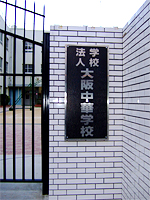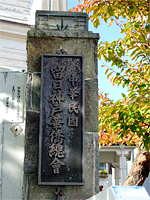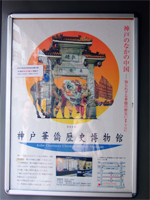Politics and Security Field
Cultivating Talented Individuals:Support Scheme:Investigative Research Assistance (for student)
HAN Pei-Chun / Investigation Area: Osaka, Kobe, Kyoto and Nagoya
2008.11.15
Study Region(Country/City)
The objective of research
The primary objective of this research project is to increase the sample of informants in Japan. This project employs a synthesized method of contextual analysis and field study. In terms of field study, through participatory observations and questionnaires, I have already collected data from 60 questionnaire respondents so far. Furthermore, I have already conducted in-depth interviews with 10 informants in the Tokyo metropolitan area. To avoid sample bias in Tokyo area, I hope to gather more data through the same approach of participatory observations, questionnaires and in-depth interviews geographically mixed for further understandings and discussions on the research topic. The increase of informant’s sample is expected to facilitate comprehensive analyses on Taiwanese Diaspora’s cultural identity in the complete dissertation.
Research Topic
This research project examines cultural identity and the related discourses of one particular immigrant group, the first-generation Taiwanese Diaspora, in contemporary Japan. This group of overseas ethnic Chinese came to Japan from Taiwan after the end of WWII. They have experienced complex transitions in both legal status and self-identification. Constituted from the legacies of Japanese colonialism and Chinese nationalism, the Taiwanese Diaspora constantly negotiate, reconstruct and redefine their identity of “neither here, nor there” perplexity. This distinctive feature of identity predicament represents a unique case within the population of overseas ethnic Chinese.
Achievement
This study focuses on the first generation overseas Chinese. I collected data from 20 questionnaire respondents and conducted in-depth interviews with 10 informants in the areas of Osaka, Kobe, Kyoto, and Nagoya. Through the questionnaires, I acquired the basic data of my focus group members, such as their genders, years of immigration, education levels and employment backgrounds, etc. Face-to-face interviews with 10 individuals were conducted after the survey. The approach of this survey was snowballing through paper distributions, mail and E-mail circulations. The sources of informants were mainly from local branches of the Overseas Chinese Association of Japan. The brief itinerary of survey is summarized as follows:
- 11/15 - 11/18: I visited two organizations, which are Osaka Chinese Association and Osaka Chinese School , during this period. I interviewed three informants, who are the director and trustee of the Osaka Chinese Overseas Association, and the president of Osaka Chinese School.
- 11/18 - 11/21: I visited two institutes, which are Kobe Chinese Overseas Association , Kobe Overseas Chinese History Museum and Sun Yat-sen Memorial Hall . I interviewed three informants, who are the chairman, director, and a member of the Kobe Chinese Overseas Association. I also collected data for literature review from the Chinese Overseas History Museum.
- 11/21 - 11/23: I visited Kyoto Chinese Overseas Association and interviewed three informants, who are the trustee and members of the Kyoto Chinese Overseas Association.
- 11/23 - 11/25: I visited Nagoya Chinese Overseas Association and interviewed one informant, the director of the Nagoya Chinese Overseas Association.
According to the life narratives of those 10 informants, this research trip helps me reconfirm two of my previous findings. First, similar to the informants in Tokyo metropolitan area examined, the cultural identity of Taiwanese migrants in other areas are not bound coherently, but are subject to modification in accordance with cultural practices and social contexts. Second, while Taiwanese Diaspora assimilates to Japanese society setting through inter-ethnic interactions, their Chinese consciousness serves to facilitate networking in intra-ethnic interactions. However, different from the cases in Tokyo metropolitan area, some distinctiveness of locality was also reflected in the interviews. The informants in Osaka and Kobe explicitly addressed their political ideologies as their cultural identities and claimed their primordial attachment to the land of origin. Many of them have been actively devoted to political movements in favor of their political commitments.



